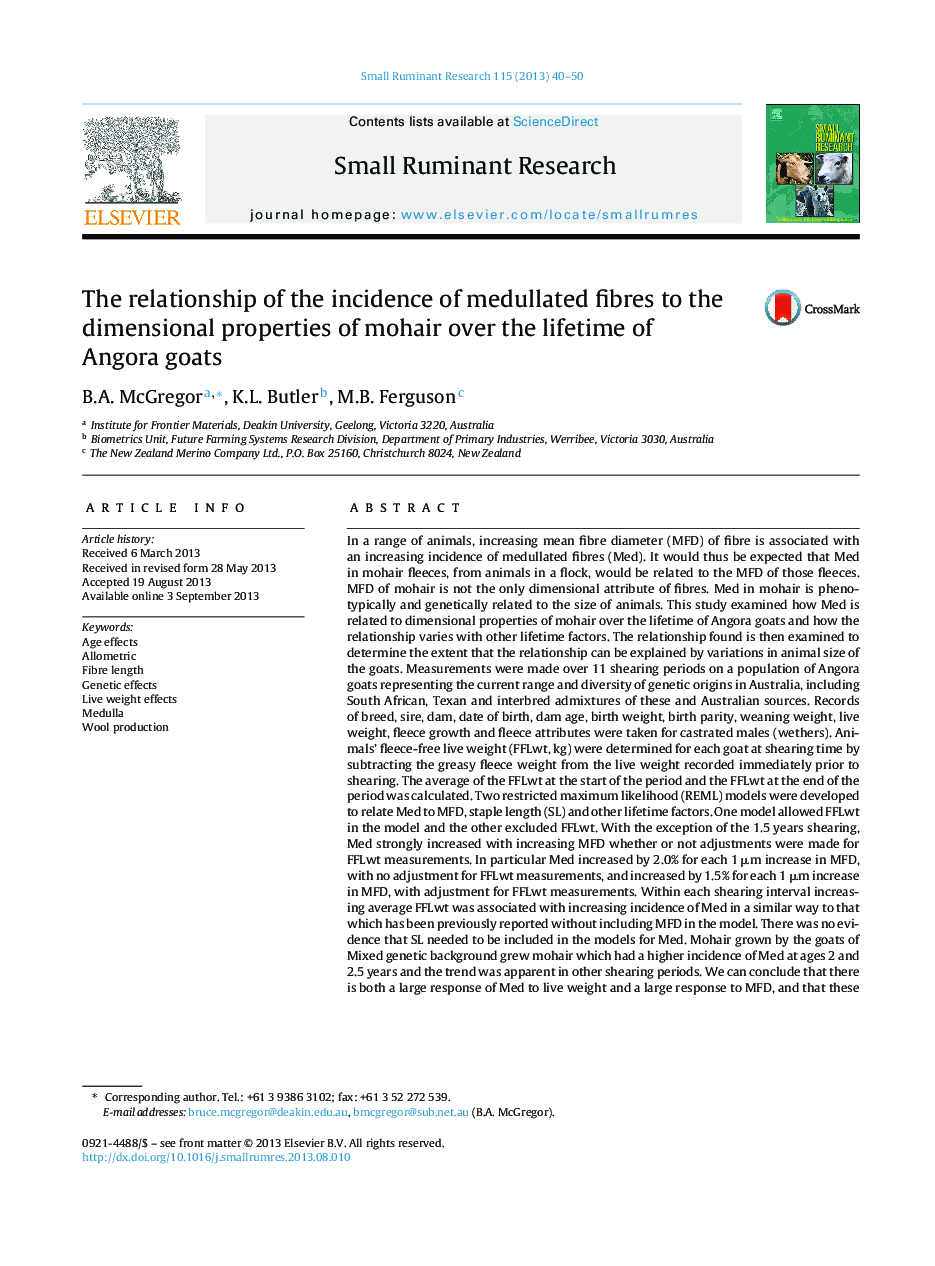| کد مقاله | کد نشریه | سال انتشار | مقاله انگلیسی | نسخه تمام متن |
|---|---|---|---|---|
| 5795818 | 1554377 | 2013 | 11 صفحه PDF | دانلود رایگان |
In a range of animals, increasing mean fibre diameter (MFD) of fibre is associated with an increasing incidence of medullated fibres (Med). It would thus be expected that Med in mohair fleeces, from animals in a flock, would be related to the MFD of those fleeces. MFD of mohair is not the only dimensional attribute of fibres. Med in mohair is phenotypically and genetically related to the size of animals. This study examined how Med is related to dimensional properties of mohair over the lifetime of Angora goats and how the relationship varies with other lifetime factors. The relationship found is then examined to determine the extent that the relationship can be explained by variations in animal size of the goats. Measurements were made over 11 shearing periods on a population of Angora goats representing the current range and diversity of genetic origins in Australia, including South African, Texan and interbred admixtures of these and Australian sources. Records of breed, sire, dam, date of birth, dam age, birth weight, birth parity, weaning weight, live weight, fleece growth and fleece attributes were taken for castrated males (wethers). Animals' fleece-free live weight (FFLwt, kg) were determined for each goat at shearing time by subtracting the greasy fleece weight from the live weight recorded immediately prior to shearing. The average of the FFLwt at the start of the period and the FFLwt at the end of the period was calculated. Two restricted maximum likelihood (REML) models were developed to relate Med to MFD, staple length (SL) and other lifetime factors. One model allowed FFLwt in the model and the other excluded FFLwt. With the exception of the 1.5 years shearing, Med strongly increased with increasing MFD whether or not adjustments were made for FFLwt measurements. In particular Med increased by 2.0% for each 1 μm increase in MFD, with no adjustment for FFLwt measurements, and increased by 1.5% for each 1 μm increase in MFD, with adjustment for FFLwt measurements. Within each shearing interval increasing average FFLwt was associated with increasing incidence of Med in a similar way to that which has been previously reported without including MFD in the model. There was no evidence that SL needed to be included in the models for Med. Mohair grown by the goats of Mixed genetic background grew mohair which had a higher incidence of Med at ages 2 and 2.5 years and the trend was apparent in other shearing periods. We can conclude that there is both a large response of Med to live weight and a large response to MFD, and that these responses are largely functionally separate. While the response to MFD is in accord with earlier work, there is an unrelated and unreported physiological mechanism that favours the production of Med in larger Angora goats. Clearly, larger Angora goats are biologically different compared with smaller animals from the same flock, in ways that are not purely related to the allometrics of size.
Journal: Small Ruminant Research - Volume 115, Issues 1â3, October 2013, Pages 40-50
